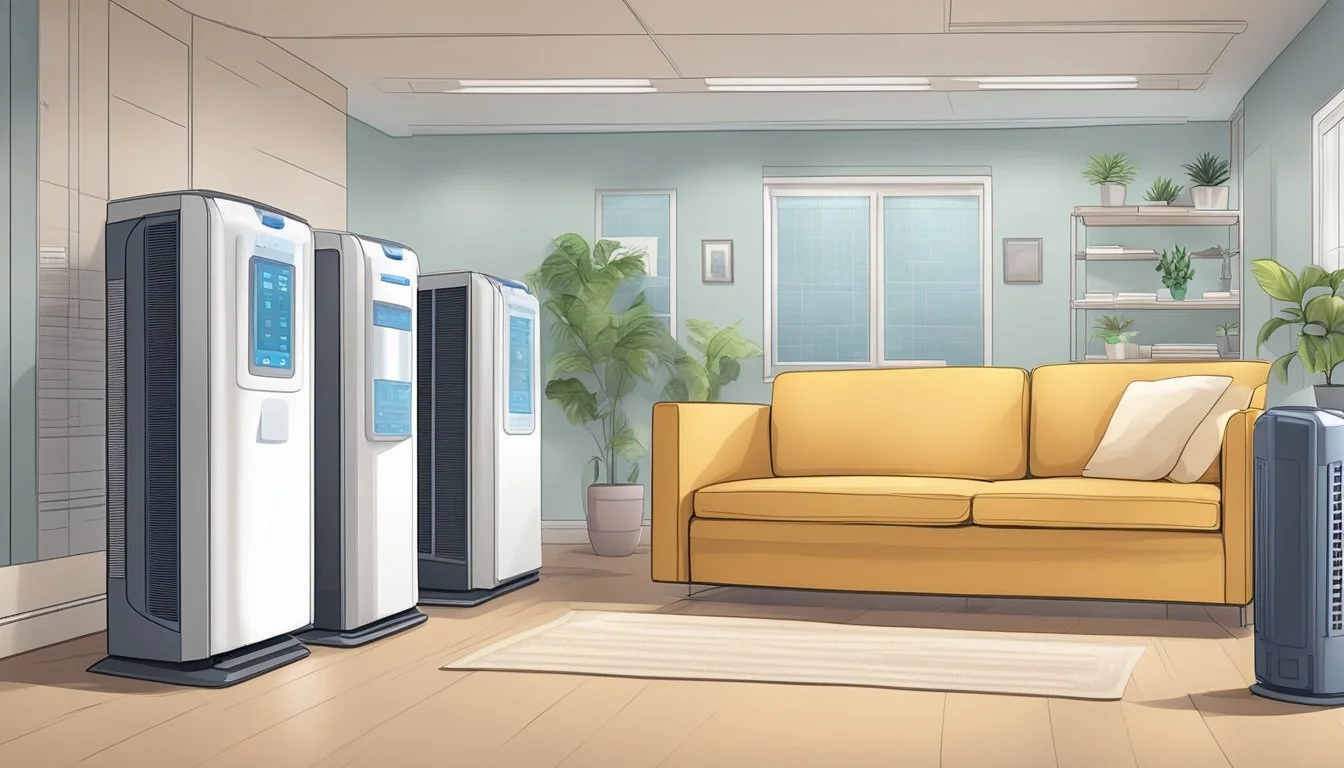Understanding CIRS Testing
Essential Insights for Carnivores
Chronic Inflammatory Response Syndrome (CIRS) is a complex condition resulting from prolonged exposure to biotoxins. Individuals following a carnivorous diet may find it particularly challenging to navigate CIRS testing due to distinct dietary interactions and biochemical pathways. Understanding the key tests for diagnosing CIRS is crucial for effective management of the disease.
Key biomarkers such as Vasoactive Intestinal Polypeptide (VIP) and Melanocyte Stimulating Hormone (MSH) are often evaluated in CIRS patients. Typically, these patients present with lower levels of these substances, underscoring the importance of detailed bloodwork and lab analysis. Additionally, Visual Contrast Sensitivity (VCS) testing and MARCoNS testing serve as pivotal diagnostic tools, helping to unearth hidden factors contributing to the condition.
To address the unique needs of carnivores, specialized services such as the CIRS White Glove Service offer tailored guidance and comprehensive testing. This involves detailed assessments, including environmental biotoxin determination, that align with the needs of a carnivorous diet. This precise approach ensures an accurate diagnosis and paves the way for appropriate treatment strategies.
What Is Chronic Inflammatory Response Syndrome (CIRS)?
Chronic Inflammatory Response Syndrome (CIRS) is a complex condition triggered by biotoxins due to mold exposure, Lyme disease, and other environmental factors. It affects various systems in the body, often involving the immune response and leading to a range of symptoms.
Biotoxin Illness and Immune System Impact
CIRS is often a result of exposure to biotoxins, which can come from mold, certain bacteria, and other sources. These toxins can bind to the immune system, causing a persistent inflammatory response. Genetic susceptibility plays a crucial role in determining who is affected.
Individuals with CIRS may experience extreme fatigue, cognitive difficulties, and pain. The immune system’s response can often lead to hormonal imbalances and other systemic issues, complicating the diagnosis. Testing typically involves a combination of symptom assessment, lab tests, and environmental history.
Commonalities with Lyme Disease and Mold Illness
CIRS shares many similarities with other conditions such as Lyme disease and illnesses caused by mold exposure. Lyme disease is caused by infection with Borrelia bacteria, often from tick bites. Both conditions can lead to debilitating symptoms like fatigue, joint pain, and neurological problems.
Mold illness typically results from prolonged exposure to mold spores in damp environments. This can trigger immune responses similar to those seen in CIRS, making differentiation difficult without precise testing. Both Lyme disease and mold illness can exacerbate or trigger CIRS in people who are genetically predisposed.
Signs and Symptoms of CIRS
Chronic Inflammatory Response Syndrome (CIRS) presents a variety of symptoms that can impact multiple organ systems. Understanding these symptoms is crucial for patients and healthcare providers to accurately identify and manage the condition.
Physiological and Neurological Symptoms
Fatigue is one of the most reported symptoms of CIRS, with patients frequently experiencing chronic tiredness that doesn’t improve with rest. This fatigue often comes with muscle aches, joint pain, and headaches.
Neurological symptoms are also common. These include issues like confusion, light sensitivity, and short-term memory loss. Patients may experience mood swings, depression, and anxiety. Vision issues are prevalent, such as blurred vision and red eyes, and Visual Contrast Sensitivity (VCS) tests often reveal deficits.
Endocrinological markers like Melanocyte Stimulating Hormone (MSH) and Vascular Endothelial Growth Factor (VEGF) are typically altered in CIRS, reflecting the body’s impaired ability to detoxify and regulate inflammation.
Environmental Triggers and Symptom Clusters
CIRS is frequently triggered by exposure to biotoxins present in mold, particularly in water-damaged buildings. Respiratory problems such as shortness of breath and chronic cough are common in those exposed to these environments.
CIRS symptoms often group into clusters. For instance, chronic fatigue is usually accompanied by general malaise, muscular pain, and joint issues. Headaches can align with visual disturbances and light sensitivity. Patients may also report sweats, abdominal pain, diarrhea, and ice pick pain, a sharp stabbing pain often felt in the head, muscles, or joints.
Identifying these patterns is essential for proper diagnosis and targeted treatment. Challenges in visual contrast sensitivity can be an early indicator, helping in the early detection and management of CIRS.
Diagnosis of CIRS
Accurate diagnosis of Chronic Inflammatory Response Syndrome (CIRS) hinges on specific assessment tools, biomarker tests, and genetic predispositions. Key diagnostics include Visual Contrast Sensitivity (VCS) testing and various biomarkers.
Assessment Tools and Biomarkers
The diagnosis of CIRS requires identifying several critical biomarkers, such as Vasoactive Intestinal Polypeptide (VIP), Melanocyte-Stimulating Hormone (MSH), C4A, MMP-9, TGF-beta1, and ACTH.
VIP levels in CIRS patients are typically lower than the normal range of 23-63 pg/mL.
MSH levels generally fall below the standard range of 35-81 pg/mL in affected individuals.
The physical exam may reveal symptoms like disorientation and memory loss associated with CIRS. These biomarkers help in distinguishing CIRS from conditions with similar presentations such as Lyme Disease, fibromyalgia, and chronic fatigue syndrome.
Role of Visual Contrast Sensitivity (VCS) Test
The Visual Contrast Sensitivity (VCS) test is a pivotal diagnostic tool for CIRS. It assesses the ability to discern differences in shades of gray, which can be impaired in CIRS patients due to neurotoxin exposure.
Poor performance on the VCS test suggests potential neurologic impact from biotoxin exposure. It is a non-invasive, cost-effective way to screen for CIRS and monitor the progression or improvement of symptoms over time.
VCS testing is often used alongside biomarker tests to provide a more comprehensive understanding of CIRS.
Genetic Predisposition and HLA-DR Testing
HLA-DR genetic testing identifies individuals genetically predisposed to CIRS. Certain HLA-DR haplotypes may render people more susceptible to biotoxin-related illnesses.
Individuals with these genetic markers are more likely to develop chronic inflammation upon exposure to biotoxins. Testing for HLA-DR can help pinpoint those at higher risk and tailor prevention and treatment strategies.
Identifying genetic predisposition aids in the early detection and management of CIRS, making HLA-DR testing an essential component in the diagnostic process for this complex syndrome.
Treatment and Management Strategies
The therapeutic approach to CIRS involves a combination of detoxification, appropriate medications, and strict environmental controls. Strategies are tailored to each individual's needs to alleviate symptoms and prevent further exposure to harmful agents.
Detoxification and Avoidance of Exposure
Detoxification is crucial in managing CIRS. Cholestyramine is a primary agent used to bind and eliminate biotoxins from the body. It binds toxins in the intestines, preventing reabsorption and facilitating excretion.
Avoidance of mold exposure is essential. Patients should minimize exposure to water-damaged buildings and prioritize ventilation improvements. Environmental assessments can identify hidden mold sources, and remediation must adhere to strict guidelines to be effective. Regular monitoring of mold levels and biotoxins, such as aspergillus and stachybotrys, can ensure ongoing safety and health.
Pharmacological and Supplement Interventions
Medications play a significant role in managing CIRS symptoms. Vasoactive Intestinal Polypeptide (VIP) is used to reduce inflammation and restore normal cellular function. VIP nasal spray can improve symptoms like fatigue and brain fog.
Binders such as cholestyramine and activated charcoal are used to remove toxins from the body. These agents must be taken regularly, typically alongside a high-fiber diet, to enhance the detox process.
Supplements like Omega-3 fatty acids, magnesium, and vitamin D support overall health and help manage symptoms. Prescription medications may also include antifungals to address MARCoNS infections and antibiotics for other infections contributing to CIRS.
Enjoy having omega-3, magnesium, and vitamin D delivered right to your door when you buy it online!
Environmental Control in Living Spaces
Creating a safe living environment is essential for CIRS patients. This includes maintaining good HVAC systems to ensure adequate ventilation and air purification. Air filters with HEPA technology can significantly reduce airborne mold spores.
Dehumidifiers help maintain indoor humidity below 50%, preventing mold growth. Regular cleaning routines with antifungal and antibacterial agents can help keep surfaces free of contaminants.
Patients should also consider removing or replacing mold-prone materials like carpets and drywall. Regular inspections and testing for environmental toxins and mold ensure that living spaces remain safe and supportive of the patient's health.
Prevention and Maintenance
Maintaining a healthy living environment and making informed lifestyle choices can significantly mitigate CIRS symptoms and prevent further health complications. Focus on controlling indoor air quality and leveraging effective dietary habits to enhance well-being.
Monitoring and Controlling Indoor Air Quality
Ensuring clean indoor air is crucial for individuals prone to CIRS. Regularly inspect the home for mold and other biotoxins, especially in damp areas such as basements and bathrooms. Mold testing kits can identify potential problem areas that may need professional remediation.
Utilize air purifiers with HEPA filters to reduce airborne particulates and biotoxins. Maintaining proper humidity levels, ideally between 30-50%, can inhibit mold growth. Regularly service HVAC systems and replace filters to maintain air quality.
Educating household members on the importance of minimizing exposure to pollutants and using non-toxic cleaning products can also help maintain a cleaner environment. Leveraging resources from functional medicine specialists can provide additional tips tailored to specific needs.
Diet and Lifestyle Adjustments
Adopting a nutrient-rich, anti-inflammatory diet aids in managing CIRS symptoms. Focus on consuming whole foods, including lean proteins, vegetables, and healthy fats. For carnivores, prioritize grass-fed meats and avoid processed foods to minimize inflammation.
Incorporating supplements like omega-3 fatty acids, vitamin D, and antioxidants may further alleviate symptoms. Regular exercise and adequate hydration support overall health and enhance the body’s ability to detoxify.
Stress management techniques such as mindfulness, meditation, and sufficient sleep are critical for reducing cortisol levels and enhancing immune function. Staying informed through reliable resources ensures continued adherence to effective lifestyle modifications.
CIRS Resources and Support
Navigating Chronic Inflammatory Response Syndrome (CIRS) can be challenging, but numerous resources and communities are available to provide support and information. Access to knowledgeable healthcare providers and educational materials are vital for effective management.
Finding Healthcare Providers Familiar with CIRS
It's essential to connect with healthcare providers experienced in treating CIRS. Physicians trained in Functional Medicine often have the expertise required to manage this condition. Dr. Ritchie Shoemaker, a leading authority in the field, has developed protocols that many functional medicine specialists use.
One way to find qualified providers is through online directories and professional networks. Many websites list practitioners who specialize in CIRS. Contacting support groups can also lead to recommendations for knowledgeable doctors. Patients should look for professionals who use targeted biomarkers and evidence-based practices in their assessments.
Educational Materials and Community Support
Educational resources are invaluable for anyone dealing with CIRS. Numerous books, online courses, and research articles provide in-depth information. Dr. Ritchie Shoemaker's works are particularly noted for their detailed insights into CIRS. Additionally, websites such as Surviving Mold offer rich repositories of articles and guidelines.
Community support is equally crucial. Online platforms like CIRSMap Community provide a space for patients to share experiences and gain emotional support. Forums, social media groups, and local support groups can connect patients with others facing similar struggles. Engaging in these communities offers practical advice, emotional support, and can significantly enhance the quality of life for those affected by CIRS.









